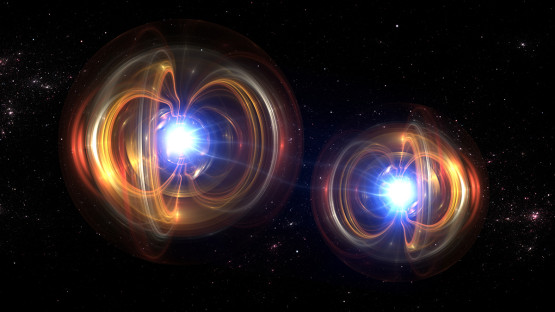
If you would like to learn more about the IAEA’s work, sign up for our weekly updates containing our most important news, multimedia and more.
Quantum Modification: Utilizing Accelerators to Implant Single Atoms for Biosensing
Joanne Liou

A new IAEA project will foster the development and optimization of a biosensor platform that would allow the exploration of sub-cellular mechanisms. (Photo: Adobe Stock)
In the field of quantum technology, accelerators have been intensively applied within the last decade to modify and characterize materials. Accelerator-based techniques use high-energy ions to alter atomic structures in materials, which allows scientists to control the behaviour of single atoms. The main use of accelerators has been in ion implantation, which is a widely used technique in the semiconductor industry and has been around for decades.
“For semiconductors, a high number of ions are implanted to change the electrical properties of, for example, silicon,” explained Andrew Bettiol, Associate Professor at the National University of Singapore. “For quantum technologies, we have a very different aim. We want to control the ions at the single ion level. We are not implanting millions or billions of ions; we are implanting exactly one ion.”
“ This quantum biosensing technique could be applied to visualize or measure processes that work at the cellular level and have a very small magnetic field, such as the magnetic fields that are produced when neurons fire in our brains.
The challenge in single ion implantation is determining when, where and if, in fact, a single ion is implanted. “And just because you implant the ion into the material, it doesn’t mean it works the way it should as a qubit or colour centre,” Bettiol said. Qubits, or quantum bits, are complex versions of the information-carrying bits used in conventional computing, and colour centres are defects that emit light for quantum sensing.
In May 2021, the IAEA hosted a four-day training workshop on materials engineering using ion beams. The workshop included an introduction to focused ion beam instrumentation and the detection of single ions. More than 80 participants, half of them from developing countries, attended the virtual workshop, which was implemented under a coordinated research project and aimed to improve understanding of and engage newcomers to the quantum field. The workshop also coincided with the launch of an IAEA e-learning course, Ion-beam Engineering of Materials for Quantum Technologies, which aims to engage the next generation of quantum experts.
“The IAEA has been at the forefront of coordinating international collaboration, research and development in quantum technologies aligned with national and international initiatives,” said Aliz Simon, a nuclear physicist working on accelerators at the IAEA. “The IAEA is continuing its efforts in coordinated research to realize the benefits of quantum for the greater good of society.” A new IAEA project, expected to be launched later this year, will foster the development and optimization of a biosensor platform based on colour centres in a diamond, which would allow the exploration of sub-cellular mechanisms. In the quantum field, diamonds are used as semiconductors to consequently sense electric and magnetic fields in single living cells.
Colour centres for quantum sensing
Diamond, in its purest form, is a lattice of carbon atoms that has more than 500 documented defects that emit light. One of these known defects is the nitrogen–vacancy (NV) colour centre. An NV colour centre occurs when one carbon atom is taken away to create a vacancy, and a neighbouring carbon atom is replaced by a nitrogen atom. “NV colour centres can naturally occur and are randomly distributed. With accelerators, we can artificially create this defect with ion implantation and create them in specific regions within nano-scale diamond crystals,” Bettiol said. Among the known defects of diamond, the NV centre can be embedded in nano-scale diamond crystals, and it can be controlled at room temperature and is biocompatible — not harmful or toxic to living systems.
Diamond NV centres have the capability of magnetic field sensing through a technique called optically detected magnetic resonance, or ODMR. The ability to image magnetic fields has implications in both biology and materials science. “It’s an optical way of looking at light emission and detecting very tiny magnetic fields that occur in biological processes,” Bettiol explained. “This quantum biosensing technique could be applied to visualize or measure processes that work at the cellular level and have a very small magnetic field, such as the magnetic fields that are produced when neurons fire in our brains.”
Bettiol’s current research applies the ODMR technique to detect malaria. “Red blood cells that have been infected with malaria have tiny magnetic particles that can be detected with ODMR,” he said. “Anything that produces an electromagnetic field could potentially be detected using this method.”
The upcoming IAEA project will further investigate quantum sensing using ODMR, as well as the characterization and optimization of sensing devices. The new project, which will bring together researchers who have a common interest in biosensing, stems from a previous project that was broader in scope and aimed at advancing accelerator-based ion beam tools. “The IAEA is a good vehicle for collaboration and has created a community for experts to exchange information and learn from one another,” Bettiol said.





